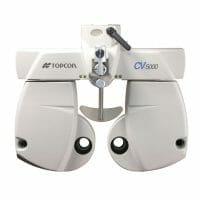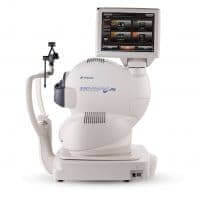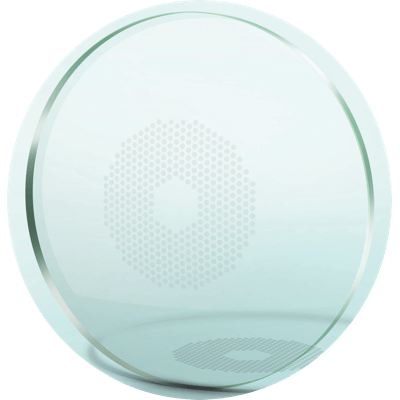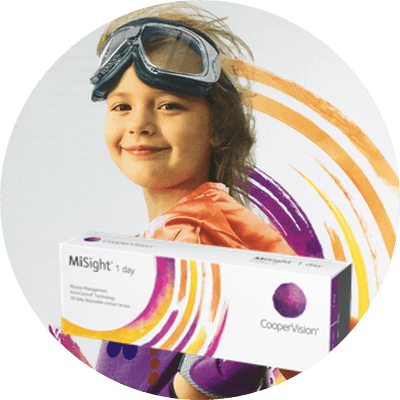Myopia management is a treatment to slow down the progression of shortsightedness (myopia) by up to 60% using specially prescribed myopia management spectacle lenses, contact lenses and ortho-k.
Myopia is Increasing
Approximately 2.6 billion people were diagnosed with myopia in 2020, this number is predicted to rise to around 4.9 billion by 2050!
Why is it Important?
Shortsightedness is associated with diseases such as myopic macular degeneration, retinal detachment, cataract, and open angle glaucoma. The higher the myopia or nearsightedness, the greater the risk of developing these conditions.
However, if we reduce shortsightedness by just 1 diopter in an individual, we could reduce the risk of developing myopic maculopathy by 40% irrespective of the severity of myopia.
Specialised spectacle lenses and contact lenses are now available at our practice to slow down your child’s myopia. We now regard myopia management as key to reducing the risk of these eye conditions for all children who are developing shortsightedness.
Odds of Developing Medical Eye Conditions with Myopia1
| Degree of Myopia | Cataract | Glaucoma | Retinal Detachment | Myopic Maculopathy |
|---|---|---|---|---|
| -1 to -3 | x2.1 | x2.3 | x3.1 | x2.2 |
| -3 to -5 | x3.1 | x3.3 | x9 | x9.7 |
| -5 to -7 | x5.5 | x3.3 | x21.5 | x40.6 |
What Should You Do?
Head for the Outdoors!
Just by spending 1-2 hours a day outdoors reduces the risk of becoming shortsighted by up to 50%2. So our advice is start going on those long walks – it’s good for your child as well as the parents! Outdoor activity seems to offer a protective effective in preventing the development of shortsightedness. Therefore, if either parent is myopic and your child has not yet developed myopia, this advice is definitely worth taking.


Near Work and Myopia
The amount of time and how close children hold things has been shown to be related to progression of shortsightedness (myopia). In general, limit near activities outside of school to 2 hours – that includes mobile devices and tablets.
Near Work and Myopia
The amount of time and how close children hold things has been shown to be related to progression of shortsightedness (myopia). In general, limit near activities outside of school to 2 hours – that includes mobile devices and tablets.

Myopia Management Programme
We now have 3 proven ways to slow down eye growth & myopia. Our myopia management plan is a dedicated monitoring and treatment plan for each child using the very latest technologies to measure eye growth.
MiYOSMART
Spectacle Lenses
Utilizing ground breaking lens technology, MiYOSMART lenses are the latest technological breakthrough in myopia management. Research over 2 years shows these lenses slow eye growth and myopia by around 60% for children who start treatment at an average age of 104.
MiSight
Contact Lenses
The first FDA approved 1 day disposable contact lens for myopia management. 3 yr results show a 52% reduction in eye growth when treatment was started at the age of 105. Extensively researched, the latest 6 year results show that 23% of wearers’ prescriptions had not increased at all.
Orthokeratology
Night Lenses
Sleep in specially designed lenses that gently reshape of the eye overnight resulting in clear vision during the day without spectacles or contact lenses. A large body of evidence shows that Ortho-K typically reduces eye growth by approximately 50% over a 2-year study period6.
IMPORTANT: the percentage data for one versus another type of treatment does not mean one treatment is better than another. Treatment effect varies according to duration of treatment. Don’t worry though, our clinicians will demistify the complex science.
How Effective Are Myopia Management Treatments?
Most evidence based studies are carried out over 2-3 years therefore we can only state that the effectiveness is over this evaluation period. However, clinical recommendations are to continue and monitor the effect of treatments until the child is an adult where we know myopia tends to stop progressing. As a result, we recommend myopia treatments continue until the age of 18-21. It is important to note that even a 1D reduction in myopia reduces the risk of myopic macular degeneration in an individual by 40%.
There are a number of scientific models that can be used to predict the progression of myopia based on the age of a child and current levels of myopia. The models also show how various treatments would slow down myopia for that individual. We use these models in our on-going myopia management consultations to benchmark success and when to consider switching treatments.
References
- D.I. Flitcroft, The complex interactions of retinal, optical and environmental factors in myopia aetiology, Progress in Retinal and Eye Research, Volume 31, Issue 6, 2012, pp 622-660.
- Xiong S, Sankaridurg P, Naduvilath T, et al. Time spent in outdoor activities in relation to myopia prevention and control: a meta-analysis and systematic review. Acta Ophthalmol. 2017;95(6):551-566.
- Huang HM, Chang DS, Wu PC. The Association between Near Work Activities and Myopia in Children-A Systematic Review and Meta-Analysis. PLoS One. 2015;10(10):e0140419. Published 2015 Oct 20. doi:10.1371/journal.pone.0140419.
-
Lam CSY, Tang WC, Tse DY, Lee RPK, Chun RKM, Hasegawa K, Qi H, Hatanaka T, To CH. Defocus Incorporated Multiple Segments (DIMS) spectacle lenses slow myopia progression: a 2-year randomised clinical trial. Br J Ophthalmol. 2020 Mar;104(3):363-368. doi: 10.1136/bjophthalmol-2018-313739.
- Chamberlain, Paul BSc (Hons)1∗; Peixoto-de-Matos, Sofia C. MSc2; Logan, Nicola S. PhD3; Ngo, Cheryl MBBS, MMed4; Jones, Deborah BSc, FAAO5; Young, Graeme PhD, FAAO6 A 3-year Randomized Clinical Trial of MiSight Lenses for Myopia Control, Optometry and Vision Science: August 2019 – Volume 96 – Issue 8 – p 556-567.
- VanderVeen, Deborah K. et al. Use of Orthokeratology for the Prevention of Myopic Progression in Children. Ophthalmology, Volume 126, Issue 4, 623 – 636.








